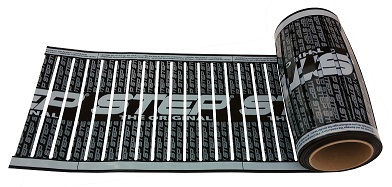 NATIONAL REPORT—Forced hot air heating has been the traditional way of heating spaces but the pandemic along with an increasing concern for efficiency is leading more hotel owners to choose radiant heating systems for space heating—the Atlantis Casino and Spa in Reno, Nev., and the Rush Creek Lodge in Yosemite, Calif., being two examples. Both were spa installations.
NATIONAL REPORT—Forced hot air heating has been the traditional way of heating spaces but the pandemic along with an increasing concern for efficiency is leading more hotel owners to choose radiant heating systems for space heating—the Atlantis Casino and Spa in Reno, Nev., and the Rush Creek Lodge in Yosemite, Calif., being two examples. Both were spa installations.
“Our radiant heating solutions are perfect for hotels and spas in new construction or remodeling,” says President of STEP Warmfloor, Monica Irgens. “With forced air, you are just blowing air around which aggravates allergies. We are actually warming the air with gentle heat in a healthier, more sustainable way. Radiant heat is 40 to 60 percent more energy efficient than forced air systems.”
For those considering radiant floor heating systems there are several types to choose from.
Hydronic systems pump heated water from a boiler through tubing laid in a pattern underneath the floor. The water supplied to the system generally ranges from 85°F (29°C) to 140°F (60°C) and is controlled by thermostats to moderate the floor temperature. A cementitious material or an air gap is required to distribute evenly the heat.
With the second type of system, electric cables and flexible heating films convert electrical power into heat and require a thermal mass or an air gap to spread out the heat. Since the power generated is fixed, temperatures are controlled by on/off thermostats and floor sensors, creating differential temperature changes in the floor.
With the STEP Warmfloor type of system, self-regulating elements are made of a semi-conductive material, which acts as a sensor; the heat output increases as the temperature decreases and conversely, the heat output decreases as the temperature increases. The self-regulating element comes as a mat and can be placed directly under the floor covering because it cannot overheat.
Can Even Be Under Carpet
STEP Warmfloor products connect to a low-voltage electrical power supply and do not require a ground fault switch. The elements can be put under any non-conductive floor covering be it hardwood, ceramic or porcelain tiles, natural stone, laminate, or carpet. “With our system there is no maintenance,” Irgens says. “Thermostats are made for the system to suit you.”
“It is scientifically proven that STEP Warmfloor is significantly more efficient than heating-cables and water tubing systems,” Irgens adds.
More on Indoor Air Quality
“Radiant heat does not use blowers or fans like forced air heating systems to circulate allergens and micro-particles throughout the room,” Irgens says. “Radiant heat provides cleaner air, better energy efficiency, and comfort, for a healthier and safer indoor air quality. Using STEP Warmfloor radiant heating elements eliminates the need for a forced air furnace.”
STEP Warmfloor’s radiant heating systems warm up a room by first heating cold objects within it. Because STEP Warmfloor’s floor-installed heating elements are self-regulating, they decrease electrical power usage as ambient temperature increases, making them energy-efficient and without risk of overheating.
The concept of radiant heating is to heat cold objects within the room. Objects maintain heat, thereafter, warming the air and giving an even and comfortable environment. A large area of mild surface temperatures, such as a warm floor, can transfer as much heat as a small surface area, such as a radiator, at high surface temperatures. The even distribution of heat eliminates drafts and gives a pleasant comfort at a lower temperature, making the system more cost-effective. The heat stays where you want it at the body level and not in the ceiling (as with forced hot air systems). In addition, radiant floor heat minimizes mold growth because it reduces the type of humidity that fosters mold and fungi growth.
The U.S. Green Building Council launched its global economic recovery strategy in May, which outlines a path for how healthy places and LEED will support recovery efforts as businesses prepare for a post-pandemic world. Because STEP Warmfloor underfloor radiant heating solutions are a sustainable way to bring warmth to hotel suites and spas, all the while reducing energy costs and improving indoor air quality, they can be used in LEED projects and qualify for LEED credits.
Glenn Hasek can be reached at greenlodgingnews@gmail.com.





